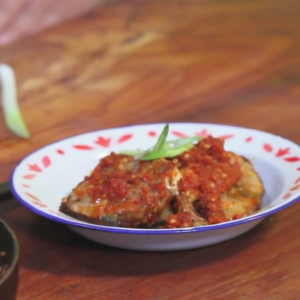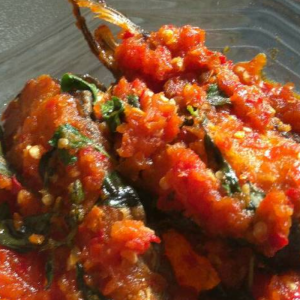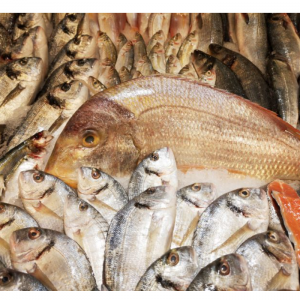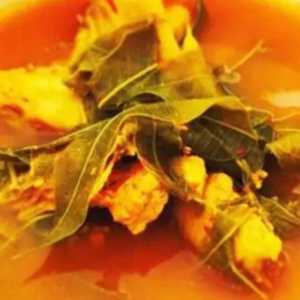
Basic Fish Cooking Techniques
| Thu, 29 Apr 2021 - 09:58
Regardless of the cooking technique, a good rule of thumb to follow is that it will take approximately 8-9 minutes per inch of thickness. That said, it is always a good idea to keep an eye on your fish when it is cooking – your oven may have a hot (or cool) spot, your coals may be hotter (or cooler) than you intended, or your fish may be slightly uneven in terms of thickness.
But in any case, fish is done when the fish firms up, it is more opaque throughout and has a flaky texture. Don’t be afraid to take a fork or thin bladed knife to check your fish when it is cooking. A temperature of 135 degrees will be done. For a more rare finish – as you might want with tuna – a temperature of 120 will be more than enough. Do remember that the fish will keep cooking when you take it off whatever heat you are using, so err on the side of just under-done.
With any of these techniques, you do need to consider seasoning – salt and pepper, or herbs and spices you like – and you will always want to brush it with a little oil before cooking. A squeeze of lemon is always a nice finish with any fish.
Also read: The Benefits of Tilapia and Why The World Needs It
Sautéing
Sautéing is probably the easiest way to prepare fish. Whether you have coated your fish with a little flour or cornmeal and breadcrumbs or are preparing it naked, you will want to preheat a skillet to medium high heat with some oil or butter to just cover the bottom of the skillet. Place on the heat and let cook until lightly browned on the under side, turn and continue to watch until done.
A nice preparation for almost any kind of fish is to sauté the fish until just under done. Remove from the heat and hold. Saute your favorite vegetables and when they are nearly done, just add the fish back in and finish cooking. A cup of marinara or a dash of teriyaki sauce can finish it off. Serve it with rice or pasta and your meal is done.
Baking or Roasting
Baking is done at a more moderate temperature (350) and roasting at a much higher temperature (400 to 500). Roasting is best for whole fish or very large fillets or steaks. Your fish will also get done more quickly when roasting. Bake or roast on a baking sheet or in a baking pan that has been coasted with non-stick spray. When baking or roasting fish, it is nice to put a few vegetables in the pan – onions, carrots, zucchini, whatever you like. A little bit of white wine or chicken stock in the pan (just to barely cover the bottom) will add flavor and ensure moistness. Or, instead of vegetables and liquid, coat the fish lightly with a little flour, herbs and breadcrumbs and turn throughout the cooking process to crisp.
Also read: Tilapia Pass Benefits of Streptococcus Vaccine to Their Offspring
Broiling
You can broil any kind of fish unless it is a very large whole fish (more than 3 pounds, which would be better done roasted). Preheat your broiler for 15 minutes or so. Position the rack as close to the heat source as you can and put the fish in a baking sheet or glass dish. If the fish is less than 1 inch thick, do not turn as there is enough heat in the oven to cook top and bottom. If your fish has skin, it should be skin side down in the pan.
Poaching
Poaching is simply cooking in liquid. Wine or stock with a little water added and any herbs or seasonings you like work great. You will want enough liquid to cover your fish. Bring your poaching liquid to a boil in a skillet and let boil for a few minutes to reduce a bit and develop the flavors. Place the fish gently in the liquid and cook until done.
Another method of poaching fish is ‘en papillote’ – in little packages. You can use parchment paper or aluminum foil. On a large piece of parchment paper or foil, place some finely chopped vegetables – about ½ to ¾ cup per package. Place the fish on top of the vegetables, then top with about 2 Tbsp of liquid – stock, wine or a marinade that you like. Place the packages on a baking sheet and bake at 400 degrees. You will need to allow a little more time than the general guideline – perhaps 12-15 minutes – to ensure doneness.
Also read: Fish-Oil-Free Shrimp Diets may Benefit from DHA Additive Inclusion
Grilling
The best fish for grilling have a heartier texture – like swordfish, salmon and tuna. With a fish grilling basket, more gentle fillets can be grilled as well. In all cases, you should start with a hot fire with a grill rack that is clean and has been coated with non-stick spray. Brush the fish lightly with oil and season with salt and pepper and any herbs or spices you enjoy. If the fish has skin on it, start it skin side down and turn when it starts to look firm. If it is not a very thick fillet, you can cover and never turn at all.
If you have a grill pan for your stove top, the same rules apply.
Source: Waterfrontseafoodmarket.com






















